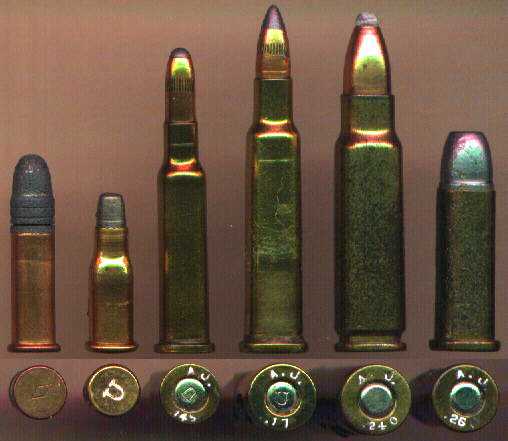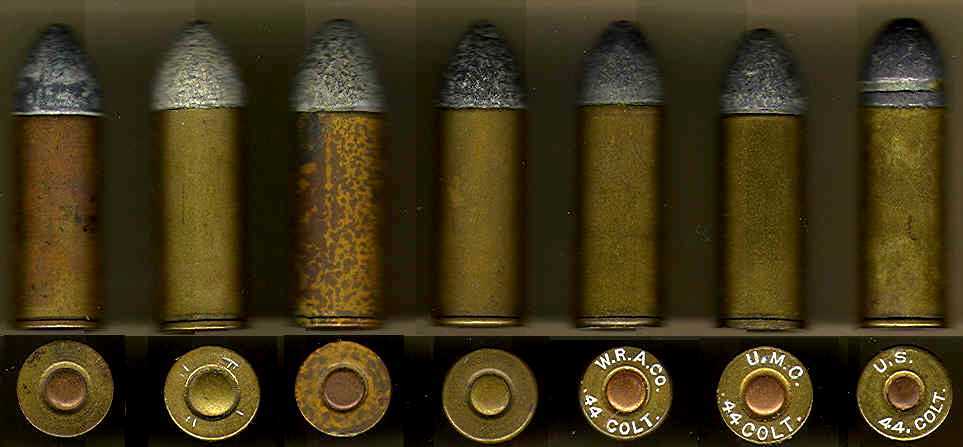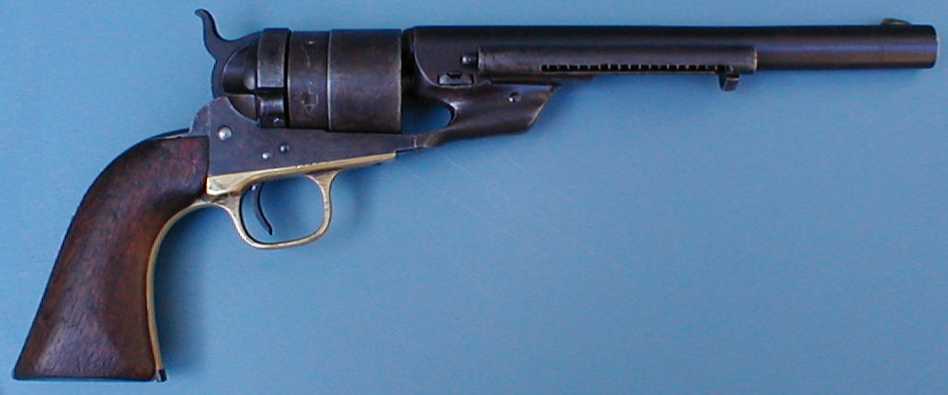|
THE CARTRIDGE COLLECTOR'S EXCHANGE |
| Contents
Cartridge
Lists Links to Other Sites
Cartridge Collectors Organizations:
Auctions:
Books:
Other Collectr's Sites: |
Home of the Old Ammo Guy's Virtual Cartridge
Trading Table
Picture Page
March 2004
This is arguably one of the prettiest cartridge box labels produced by any of the American ammunition makers. Produced between 1880 and 1898 by the American Metallic Cartridge Company, this box contains paper bulleted shot loads, as the side label attests. The September 9th, 1879 patent date on the side label refers to patent 219,491 issued to Henry W. Mason and assigned to the Pheonix Metallic Cartridge Company, the predecessor of the American Metallic Cartridge Company. Mason was the plant manager for Phoenix.
An early patent marked UMC label.....
This .32 Webley label by the Union Metallic Cartridge Company dates
from about 1872 to 1873, following issuance of Alfred Hobbs and
The cartridges of Alton Jones......
Here's a lineup of five of the cartridges produced by Alton Jones, with a .22 long rifle for comparison. To the right of the .22 is the .14 Jones Express rimfire, made from a necked down Remington .22 rimfire long rifle case. The next three are center fire rifle cartridges, beginning with the .145, made from either a .22 Extra Long Maynard or a Velodog case. Next is a .17 Scorpion, made from a .22 Winchester CF or Hornet case, The last of the rifle cartridges is the .240 rimless, based on a necked down .30 Carbine case. The cartridge on the far right, the largest of the Alton Jones cartridges, is the .26 pistol cartridge, which was probably made from a shortened .22 Winchester CF or Hornet case. The only other Alton Jones cartridge that I am aware of is a .22 based on a necked down .30 Carbine case.
Early .44 Colt cartridges & one of the guns that used them....
Here is an assortment of .44 Colt cartridges that would have been available
on the shelves of the local mercantile store during the 1870s to1890s.
I believe the four unheadstamped cartridges are early products of Colt,
the Union Metallic Cartridge Company, the United States Cartridge Company,
and Winchester respectively (see note below). The second of these has four odd tool marks spaced
evenly around the head. The last three cartridges are later, headstamped
examples by Winchester, the Union Metallic Cartridge Company, and the United
States Cartridge Company. The earliest .44 Colt cartridges were loaded with
bullets that were quite similar to the .44 percussion bullets that preceded
them. The grooved bullet of the headstamped US Cartridge Company
Note: A 9/09/2004 e-mail from Howard Hoovestal advises that the first cartridge in the picture was made by UMC and the second is by Colt, with a bar anvil in the Berdan primer cup. He discusses this cartridge in an article in the Rocky Mountain Bullet No 36 (Sept/Oct 1991). I appreciated getting opinions from the far-wiser-than-I collectors such as Howard regarding the unheadstamped cartridges I picture on my web page, which I often have to take my best shot at identifying.
|




 round, with
its blunt round nose, is similar to those used on the .44 Remington
cartridge. It is interesting to note that the .44 Colt cartridge was made
for approximately 50 years, from about 1872 to1930, yet the only firearms
chambered specifically for it were the Richards and Richards-Mason conversions
of the Colt Model 1860 revolvers, about 11,000 in all. The revolver
shown here is a Colt Model 1860 Richards transition, also know as the Richards
Second Model. This revolver is in the 197000 serial range, and is all
original except for the ejector rod and head, which appear to be from a Colt
Peacemaker. The ejector head tended to be a weak point on these revolvers,
and they are often found to have been replaced.
round, with
its blunt round nose, is similar to those used on the .44 Remington
cartridge. It is interesting to note that the .44 Colt cartridge was made
for approximately 50 years, from about 1872 to1930, yet the only firearms
chambered specifically for it were the Richards and Richards-Mason conversions
of the Colt Model 1860 revolvers, about 11,000 in all. The revolver
shown here is a Colt Model 1860 Richards transition, also know as the Richards
Second Model. This revolver is in the 197000 serial range, and is all
original except for the ejector rod and head, which appear to be from a Colt
Peacemaker. The ejector head tended to be a weak point on these revolvers,
and they are often found to have been replaced.